
1.e4 e6 2.d4 d5 3.Nc3 Nf6 4.Bg5 Be7 5.e5 Nfd7 6.h4
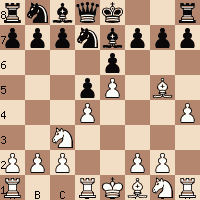
This chess variation is called the Alekhine-Chatard attack. Alexander Alekhine is universally regarded as a great attacking genius, and one of the most creative players of all time. White offers a pawn in order to open up attacking lines around Black’s king. Black accepts the sacrifice less than half the time at high level play, because White gets very dangerous play in return for the pawn.
6...a6
A well principled move.
That’s because it’s often good to counter an attack on the wing by striking back in the center. Black wants to play …c5. However, if he played this move immediately, than White could play 7.Nb5 and then bring his knight in to d6.
7.Qg4
This move forces Black to open the h file. White threatens Bxe7 followed by Qxg7. If Black castles, than White wins immediately with Bh6.
7...Bxg5 8.hxg5 c5 9.g6
White immediately takes advantage of the open lines he has created. If 9...fxg6, then White plays Qxg6+, followed by Rxh8, and then captures Black’s queen. Although Black isn’t technically lost in the final position, it’s known to yield a solid advantage to White.
9...f5
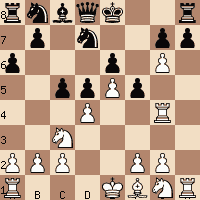
The best move.
10.Qf4 h6 11.dxc5 Nc6 12.Nf3 0–0
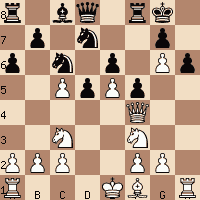
Be careful before castling into an area where your opponent controls a lot of squares. It looks safe over on the king side, because Black has locked up the pawns over there. However, White has the following dangerous advantages on that side of the board:
- Open h file with the rook bearing down on the pawn at h6.
- Queen also bearing down on h6.
- Pawn on g6 controlling light squares all around Black’s king.
12...Ne7 threatening to capture the pawn on g6 would have been a much safer move.
13.0–0–0 Nxc5 14.Bc4 Qe8
A very logical move which gets out of the pin and threatens the pawn on g6.
15.Rxd5!
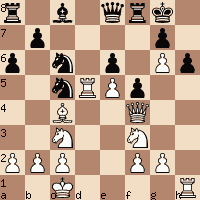
A very surprising move, and the first part of a lively combination. I wish I could take credit for this idea, but it’s been played at the grandmaster level more than once.
15...exd5
This loses immediately. Best was 15...Ne4 with a complicated struggle.
White to Move and Win.
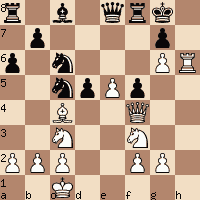
16.Rxh6!
The open file pays off beautifully! Black is forced to capture, because the immediate threat is 17.Rh8+ Kxh8 18.Qh4+ Kg8 19. Qh7 mate.
It’s worth noting that 16.Bxd5+, would have allowed Black to bring a defender in with 16…Be6 and then it’s Black who is winning. The “obvious capture” isn’t always best.
16...gxh6 17.Qxh6 Qe7
There’s no defense. Black could have resigned at this point, but he allowed me to finish.
18.Nxd5 Qg7 19.Nf6#
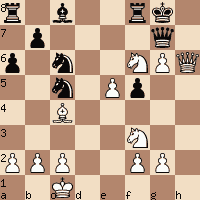

why not
15. Rhx6 g7xh6
16. Qxh6 (not sure what the best move would be for Black)
17 Qh7#
?
I’m a beginning so I imagine I am missing something 🙂